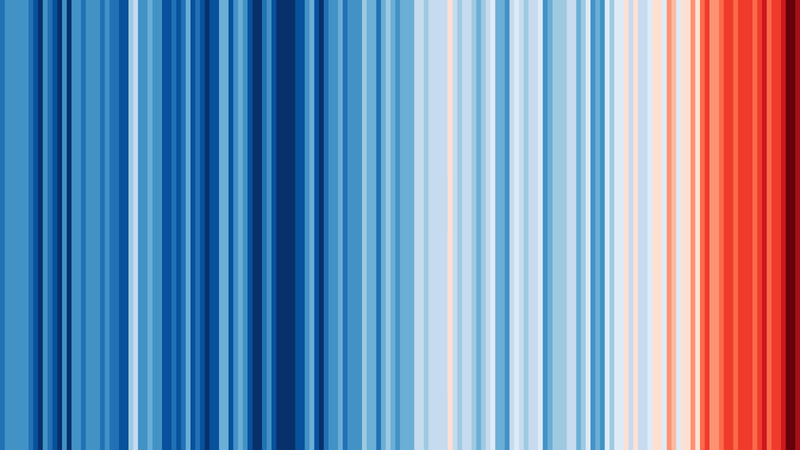May 25, 2018 at 12:42PM
via Earther

There’s a new global warming illustration that’s fit for the Museum of Modern Art or the Getty. Seriously, just look at that stunner up there.
Ed Hawkins, the climate scientist who made the viral temperature spirals, is back at it again with another striking view of our warming planet. His latest visualization strips out all unnecessary information save color to communicate how we’re changing the temperature of the Earth.
Plot the global average temperature on a line graph and it goes up over time. Easy enough to read, sure, but not a format that really conveys how weirdly warm we’re making the planet.
In an effort to demonstrate that more clearly, Hawkins decided to represent each year of U.K. Met Office data from 1850-2017 as a bold stripes of color ranging from blue (cold) to red (hot). The resulting graphic leaves little doubt about what’s going on, with blue dropping out of the equation and the red hot nature of global warming emerging clearly by the time your gaze sweeps to the right of the image.
“I wanted to communicate temperature changes in a way that was simple and intuitive, removing all the distractions of standard climate graphics so that the long-term trends and variations in temperature are crystal clear,” Hawkins told Earther. “Our visual system will do the interpretation of the stripes without us even thinking about it.”
The illustration evokes a style of painting known as color field painting that rose to prominence in the middle of the 20th century. The theory underlying the movement was the same as Hawkins’ goal: to strip out all outside information and distractions and use color alone to immediately convey meaning. Barnett Newman, one of the artists who pioneered the field, explained his work this way (emphasis added):
“We are creating images whose reality is self-evident and which are devoid of the props and crutches that evoke associations with outmoded images, both sublime and beautiful...The image we produce is the self-evident one of revelation, real and concrete, that can be understood by anyone who will look at it without the nostalgic glasses of history.”
Hawkins’ work takes this ethos and applies it to the most pressing problem of our time. And if you can’t see what the hell is happening to the planet after looking at it, then I’m not sure what will convey it to you.
Check out more of Hawkins’ “warming stripes” for a view of local global warming in Toronto, the U.S. and central England.